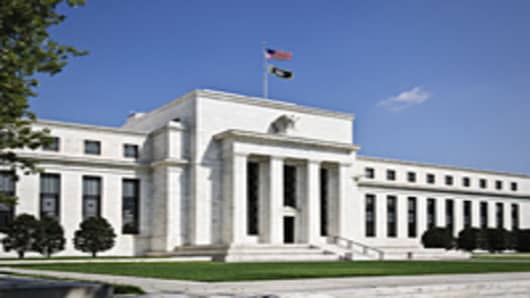The Federal Reserve on Tuesday inched closer to fresh steps to bolster a sluggish U.S. recovery, saying it stood ready to provide more support for the economy and expressing concerns about low inflation.
The U.S. central bank's policy-setting panel made no shift in monetary policy at the end of a one-day meeting, keeping overnight interest rates near zero, but it opened the door wider to pumping more money into the economy.
"The committee will continue to monitor the economic outlook and financial developments and is prepared to provide additional accommodation if needed to support the economic recovery and to return inflation, over time, to levels consistent with its mandate," the Fed said in a statement.
After its meeting on August 10, the Fed had simply said it would "employ its policy tools as necessary." The Fed underscored its concerns over slowing inflation in its statement on Tuesday, saying the underlying rate of inflation was below levels consistent with its mandate for price stability and full employment.
"With substantial resource slack continuing to restrain cost pressures and longer-term inflation expectations stable, inflation is likely to remain subdued for some time," it said.
U.S. stock prices rose after the statement, while prices for U.S. government debt fell, likely reflect some disappointment the Fed did not move more decisively. The dollar extended earlier declines against the euro.
"The Federal Reserve has taken another step, albeit a half step, in recognizing the unusually sluggish economic and employment outlook and related need for additional policy measures," said Mohamed El-Erian, co-chief investment officer at bond fund PIMCO.
Kansas City Federal Reserve Bank President Thomas Hoenig dissented for a sixth consecutive time, reiterating his view that the central bank could allow its balance sheet to shrink and that a vow—repeated Tuesday—to keep borrowing costs exceptionally low for an extended period was no longer warranted.
After cutting the overnight federal funds rate to near zero in December 2008, the Fed launched an asset-buying program in a further effort to lower borrowing costs and help the economy. In the end it bought $1.7 trillion in longer-term U.S. government debt and mortgage-related bonds.
The Fed's easy money policies and the prospect of further easing have driven up the value of currencies in other countries, including Japan and Brazil, as investors moved out of the dollar in search of higher returns.
Japan intervened last week to weaken the yen, which had surged to a 15-year high against the dollar, and emerging markets are seeking ways to control huge capital inflows.
The painful U.S. recession ended in June 2009, but the recovery has lost momentum this year with growth tapering to an anemic 1.6 percent annualized rate in the second quarter.
Other economic data over the summer also proved surprisingly weak, prompting analysts to cut their growth forecasts for the second half of the year.
A Reuters poll on Sept. 8 found analysts looking for growth in the third quarter to come in at just a 1.8 percent rate.
While the tone of the data has improved in recent weeks, the economy's sluggish pace and a deeply troubled job market have kept alive fears of another downturn.
The unemployment rate stands at a lofty 9.6 percent and private sector hiring has been tepid.
Acknowledging the flagging recovery, the Fed opened the door to more easing at its last gathering on Aug. 10 when it announced it would resume purchases of longer-term Treasury securities to prevent its portfolio from shrinking as the mortgage-linked debt it holds matures.
Fed Chairman Ben Bernanke said late last month that the central bank was ready to provide more stimulus if needed, but that policymakers would only act if the outlook deteriorated significantly.


